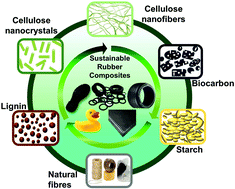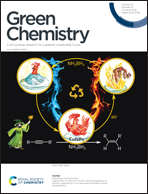Bioresourced fillers for rubber composite sustainability: current development and future opportunities
Abstract
Ending the fossil fuel era towards a sustainable future will require high-performing renewable materials with a low environmental impact. Carbon black, produced by partial combustion or thermal decomposition of petroleum hydrocarbons, is by far the most dominant filler of rubber composites, followed by mineral fillers (e.g. silica, talc, clay, calcium carbonate, etc.). However, the manufacture of carbon black has a considerable carbon footprint. Similarly, mineral fillers also do not come without challenges, including poor compatibility with rubber matrices and high density. Consequently, the need for sustainable and green fillers with a low or even zero carbon footprint has dramatically increased. In recent years, plant-derived sustainable materials, such as cellulose nanocrystals, natural fibers, lignin, biochar, polysaccharides, etc., have been extensively investigated as substitute or complementary fillers of rubbers. In this work, we critically reviewed recent developments in the innovation and utilization of sustainable biofillers for rubber composite applications, emphasizing the effect of the filler on the structure–processing–property relationships in rubber composites. A wide range of biofillers with an array of structure, morphology, and physico-chemical properties and their various attributes in different rubbers are intensively reviewed and discussed. Effective preparation strategies and surface modification platforms on the different biofillers to develop high-performance sustainable rubber biocomposites were critically reviewed. Finally, future perspectives for biofillers in rubber composite applications and challenges are discussed.

- This article is part of the themed collection: Green Chemistry Reviews


 Please wait while we load your content...
Please wait while we load your content...